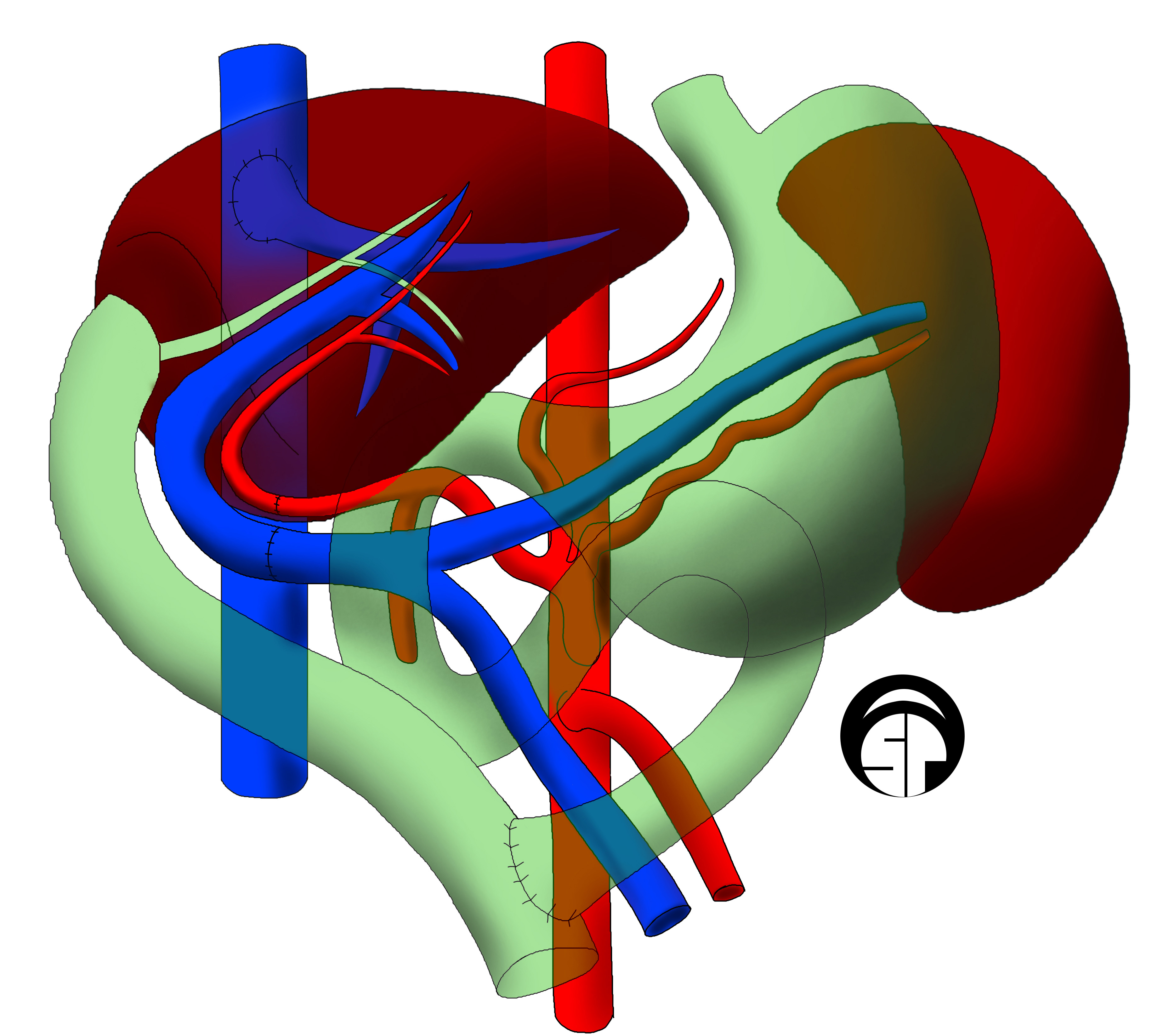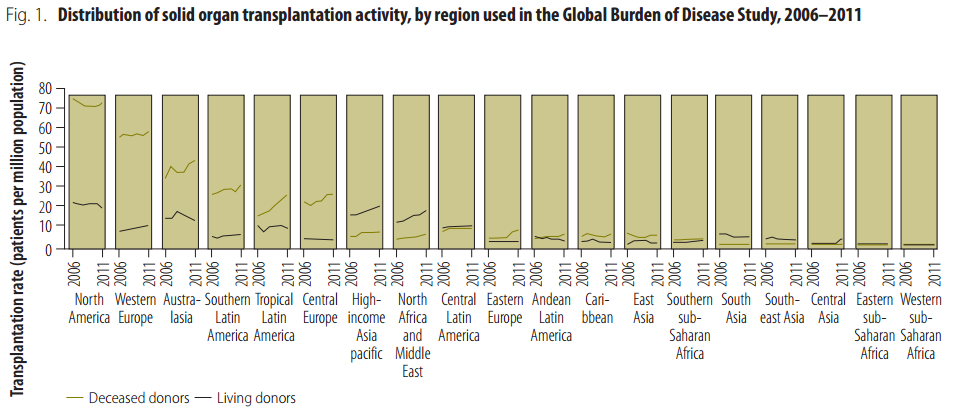|
Milan Criteria
In transplantation medicine, the Milan criteria are set of criteria applied in consideration of patients with cirrhosis and hepatocellular carcinoma (HCC) for liver transplantation with intent to cure their disease. Their significance derives from a landmark 1996 study in 48 patients by Mazzaferro ''et al'' which showed that selecting cases for transplantation according to specific strict criteria led to improved overall and disease-free survival at a four-year time point. These same criteria have since been adopted by the Organ Procurement and Transplantation Network (OPTN) in the evaluation of patients for potential transplantation.The threshold Milan criteria are as follows: * one lesion smaller than 5 cm; ''alternatively,'' up to three lesions, each smaller than 3 cm * no extrahepatic manifestations * no evidence of gross vascular invasion Under current OPTN/ONUS guidelines, patients with cirrhosis and HCC who meet these criteria may be considered for transplantation. ... [...More Info...] [...Related Items...] OR: [Wikipedia] [Google] [Baidu] |
Transplantation Medicine
Organ transplantation is a medical procedure in which an organ is removed from one body and placed in the body of a recipient, to replace a damaged or missing organ. The donor and recipient may be at the same location, or organs may be transported from a donor site to another location. Organs and/or tissues that are transplanted within the same person's body are called autografts. Transplants that are recently performed between two subjects of the same species are called allografts. Allografts can either be from a living or cadaveric source. Organs that have been successfully transplanted include the heart, kidneys, liver, lungs, pancreas, intestine, thymus and uterus. Tissues include bones, tendons (both referred to as musculoskeletal grafts), corneae, skin, heart valves, nerves and veins. Worldwide, the kidneys are the most commonly transplanted organs, followed by the liver and then the heart. Corneae and musculoskeletal grafts are the most commonly transplanted tissu ... [...More Info...] [...Related Items...] OR: [Wikipedia] [Google] [Baidu] |
Cirrhosis
Cirrhosis, also known as liver cirrhosis or hepatic cirrhosis, and end-stage liver disease, is the impaired liver function caused by the formation of scar tissue known as fibrosis due to damage caused by liver disease. Damage causes tissue repair and subsequent formation of scar tissue, which over time can replace normal functioning tissue, leading to the impaired liver function of cirrhosis. The disease typically develops slowly over months or years. Early symptoms may include tiredness, weakness, loss of appetite, unexplained weight loss, nausea and vomiting, and discomfort in the right upper quadrant of the abdomen. As the disease worsens, symptoms may include itchiness, swelling in the lower legs, fluid build-up in the abdomen, jaundice, bruising easily, and the development of spider-like blood vessels in the skin. The fluid build-up in the abdomen may become spontaneously infected. More serious complications include hepatic encephalopathy, bleeding from dilated veins ... [...More Info...] [...Related Items...] OR: [Wikipedia] [Google] [Baidu] |
Hepatocellular Carcinoma
Hepatocellular carcinoma (HCC) is the most common type of primary liver cancer in adults and is currently the most common cause of death in people with cirrhosis. HCC is the third leading cause of cancer-related deaths worldwide. It occurs in the setting of chronic liver inflammation, and is most closely linked to chronic viral hepatitis infection (hepatitis B or C) or exposure to toxins such as alcohol, aflatoxin, or pyrrolizidine alkaloids. Certain diseases, such as hemochromatosis and alpha 1-antitrypsin deficiency, markedly increase the risk of developing HCC. Metabolic syndrome and NASH are also increasingly recognized as risk factors for HCC. As with any cancer, the treatment and prognosis of HCC vary depending on the specifics of tumor histology, size, how far the cancer has spread, and overall health. The vast majority of HCC cases and the lowest survival rates after treatment occur in Asia and sub-Saharan Africa, in countries where hepatitis B infection is endem ... [...More Info...] [...Related Items...] OR: [Wikipedia] [Google] [Baidu] |
Liver Transplantation
Liver transplantation or hepatic transplantation is the replacement of a diseased liver with the healthy liver from another person (allograft). Liver transplantation is a treatment option for end-stage liver disease and acute liver failure, although availability of donor organs is a major limitation. The most common technique is orthotopic transplantation, in which the native liver is removed and replaced by the donor organ in the same anatomic position as the original liver. The surgical procedure is complex, requiring careful harvest of the donor organ and meticulous implantation into the recipient. Liver transplantation is highly regulated, and only performed at designated transplant medical centers by highly trained transplant physicians and supporting medical team. The duration of the surgery ranges from 4 to 18 hours depending on outcome. Favorable outcomes require careful screening for eligible recipient, as well as a well-calibrated live or cadaveric donor match. Medic ... [...More Info...] [...Related Items...] OR: [Wikipedia] [Google] [Baidu] |
United Network For Organ Sharing
The United Network for Organ Sharing (UNOS) is a non-profit, scientific and educational organization that administers the only Organ Procurement and Transplantation Network (OPTN) in the United States, established () by the U.S. Congress in 1984 by Gene A. Pierce, founder of United Network for Organ Sharing. Located in Richmond, Virginia, the organization's headquarters are situated near the intersection of Interstate 95 and Interstate 64 in the Virginia BioTechnology Research Park. Activities United Network for Organ Sharing is involved in many aspects of the organ transplant and donation process: * Managing the national transplant waiting list, matching donors to recipients. * Maintaining the database that contains all organ transplant data for every transplant event that occurs in the U.S. * Bringing together members to develop policies that make the best use of the limited supply of organs and give all patients a fair chance at receiving the organ they need, regardless of age, ... [...More Info...] [...Related Items...] OR: [Wikipedia] [Google] [Baidu] |
Lesion
A lesion is any damage or abnormal change in the tissue of an organism, usually caused by disease or trauma. ''Lesion'' is derived from the Latin "injury". Lesions may occur in plants as well as animals. Types There is no designated classification or naming convention for lesions. Since lesions can occur anywhere in the body and the definition of a lesion is so broad, the varieties of lesions are virtually endless. Generally, lesions may be classified by their patterns, their sizes, their locations, or their causes. They can also be named after the person who discovered them. For example, Ghon lesions, which are found in the lungs of those with tuberculosis, are named after the lesion's discoverer, Anton Ghon. The characteristic skin lesions of a varicella zoster virus infection are called '' chickenpox''. Lesions of the teeth are usually called dental caries. Location Lesions are often classified by their tissue types or locations. For example, a "skin lesion" or a " bra ... [...More Info...] [...Related Items...] OR: [Wikipedia] [Google] [Baidu] |
Vascular Invasion
Lymphovascular invasion (LVI or lymphovascular space invasion) is the invasion (cancer), invasion of a cancer to the blood vessels and/or lymphatic system, lymphatics. Terminology Lymph: A clear or white fluid that travels through vessels, moves within tissues and work to keep all the parts of the body clean. Vascular: The body's network of blood vessels. When cancer spreads to lymph and vascular system, it is thus termed as ''Lymphovascular Invasion.'' Pathology Lymphovascular invasion, especially in carcinomas, usually precedes spread to the lymph nodes that drain the tissue in which the tumour arose. Conversely, cancers with lymph node spread (known as a lymph node metastases), usually have lymphovascular invasion. Lymph node metastases usually precede secondary tumours, i.e. distant Metastasis, metastases. The absence of LVI in the context of proven lymph node metastasis is usually thought to be due to sampling error. Prognostic significance The predictive value and prevale ... [...More Info...] [...Related Items...] OR: [Wikipedia] [Google] [Baidu] |
Child–Pugh Score
In medicine, specifically gastroenterology, the Child–Pugh score (or the Child–Turcotte–Pugh (CTP) score or Child Criteria) is used to assess the prognosis of chronic liver disease, mainly cirrhosis. Although it was originally used to predict mortality during surgery, it is now used to determine the prognosis, as well as the required strength of treatment and the necessity of liver transplantation. Scoring The score employs five clinical measures of liver disease. Each measure is scored 1–3, with 3 indicating most severe derangement. Either the prothrombin time or INR should be used to calculate the Child–Pugh score, not both. In primary sclerosing cholangitis (PSC) and primary biliary cholangitis (PBC), some use a modified Child–Pugh score where the bilirubin references are changed to reflect the fact that these diseases feature high conjugated bilirubin levels. The upper limit for 1 point is 68 μmol/L (4 mg/dL) and the upper limit for 2 points is 170 μmol/L ... [...More Info...] [...Related Items...] OR: [Wikipedia] [Google] [Baidu] |
University Of California San Francisco Medical Center
The University of California, San Francisco Medical Center is a research and teaching hospital in San Francisco, California and is the medical center of the University of California, San Francisco. It is affiliated with the UCSF School of Medicine. In 2022–23, it was ranked as the 12th-best overall hospital in the United States and one of the top three hospital in California by '' U.S. News & World Report''. It was founded in 1907 at the site of Parnassus Heights, on Mount Sutro, following the 1906 earthquake, and it was the first hospital in the University of California system. The university acquired Mount Zion Hospital in 1990, which became the second major clinical site and since 1999 has hosted the first comprehensive cancer center in Northern California. Beginning in 2001, the university expanded in the Mission Bay neighborhood and added a new medical center with three new hospitals. History The UCSF medical center opened as a hospital in 1907 with 75 beds, after th ... [...More Info...] [...Related Items...] OR: [Wikipedia] [Google] [Baidu] |
Transplantation Medicine
Organ transplantation is a medical procedure in which an organ is removed from one body and placed in the body of a recipient, to replace a damaged or missing organ. The donor and recipient may be at the same location, or organs may be transported from a donor site to another location. Organs and/or tissues that are transplanted within the same person's body are called autografts. Transplants that are recently performed between two subjects of the same species are called allografts. Allografts can either be from a living or cadaveric source. Organs that have been successfully transplanted include the heart, kidneys, liver, lungs, pancreas, intestine, thymus and uterus. Tissues include bones, tendons (both referred to as musculoskeletal grafts), corneae, skin, heart valves, nerves and veins. Worldwide, the kidneys are the most commonly transplanted organs, followed by the liver and then the heart. Corneae and musculoskeletal grafts are the most commonly transplanted tissu ... [...More Info...] [...Related Items...] OR: [Wikipedia] [Google] [Baidu] |



